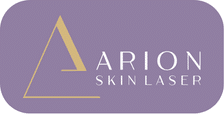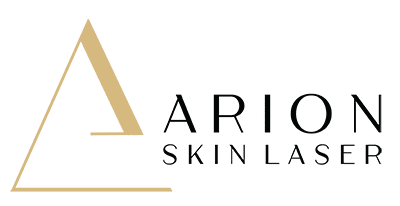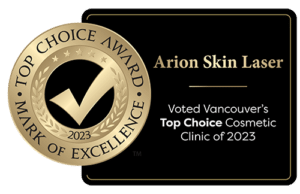Our bodies are remarkably resilient, possessing an innate capacity to heal and regenerate after injuries or illness. From repairing minor cuts and scrapes to fighting off infections, our cells are constantly working behind the scenes to maintain our health. However, sometimes chronic conditions, severe injuries, or the natural aging process can overwhelm these self-repair abilities. Conditions like diabetes, heart disease, or extensive tissue damage can create an environment where healing is severely hindered. This is where cell-derived therapy enters as an innovative field in medicine. It aims to amplify the body’s own healing potential, offering a revolutionary approach to treating a wide range of health challenges where traditional methods may fall short.
Understanding Cell-Derived Therapy
- Addresses conditions where traditional medicine has limitations.
- Harnesses cells’ abilities to repair, regenerate, and replace tissues.
- Cells used can be:
- Patient’s own
- From donors
- Stem cells (capable of becoming many cell types)
How It Works
- Firstly, cells are harvested from the chosen source.
- Subsequently, cells may be processed (isolated, expanded, modified).
- Then, they are delivered directly to the target area.
- Finally, cells aim to integrate with tissues and promote healing.
Potential Uses
- Faster healing in orthopedic injuries and chronic wounds.
- Research for diseases like osteoarthritis, heart disease, neurodegenerative conditions.
- Possible applications in immune system regulation.
- Skincare potential: wound care, anti-aging, pigmentation issues.
What is Cell-Derived Therapy?
At its core, cell-derived therapy leverages the inherent abilities of cells, the microscopic building blocks that form every tissue and organ in our bodies. It involves the strategic use of living cells or the potent substances they produce (known as cell-derived products) to achieve three primary goals:
.
Repair: Mending damaged tissues that have lost their ability to heal correctly on their own.
Regeneration: Stimulating the body to regrow healthy tissue to replace what has been lost due to disease, injury, or aging.
Replacement: Introducing functional cells to take over the role of those that are no longer working properly.
.
These remarkable cells used in therapy possess several key capabilities:
- Differentiate: The ability to transform into different specialized cell types needed to rebuild various tissues. For example, stem cells can become muscle cells, bone cells, nerve cells, and more.
- Secrete factors: Release a variety of signals (such as growth factors, cytokines, and other proteins) that promote healing, reduce inflammation, attract the body’s own repair cells, and support the growth of new, healthy tissue.
- Modulate the immune system: Help regulate and optimize the body’s immune response, which is essential for proper healing and fighting off potential infections at the site of treatment.
Sources of Cells for Cell-Derived Therapy
Researchers and clinicians can obtain cells for cell-derived therapy from several sources, each with its own advantages, challenges, and areas of ongoing research:
- The patient’s own body (autologous): Often derived from adipose tissue (fat) or bone marrow, this approach minimizes the risk of the body rejecting the cells. However, sometimes a patient’s own cells might be damaged or not available in sufficient quantity.
- Donors (allogeneic): When a patient’s cells aren’t suitable, cells from healthy donors can be used. These cells sometimes need modification to improve compatibility and reduce the risk of an immune reaction.
- Stem Cells: These versatile cells offer the potential to become many different cell types. They can be sourced from:
- Embryos (embryonic stem cells): Highly versatile but ethically controversial.
- Adult tissues (adult stem cells): Found in various tissues (e.g., bone marrow) but are more limited in their ability to differentiate compared to embryonic stem cells.
- Created in the lab (induced pluripotent stem cells): Adult cells are reprogrammed to a more versatile stem-cell-like state, offering potential advantages.
How Does Cell-Derived Therapy Work?
While the exact mechanisms vary depending on the condition and cells used, here’s a deeper look at the general process and how it aims to promote healing:
-
Harvesting Cells:
- Source Matters: Clinicians carefully collect cells from the chosen source. This could be the patient’s own body (like fat or bone marrow), a compatible donor, or a specialized stem cell bank.
- Collection Methods: The way clinicians obtain cells depends on the source. For example, they might collect adipose tissue via liposuction, bone marrow through a specialized needle, or cells from a lab-grown cell line.
Processing and Preparation:
- Isolation: Often, clinicians isolate the specific cells needed from other components within the collected tissue.
- Expansion: In some cases, they grow cells in a laboratory to increase their numbers, ensuring there are enough for effective treatment.
- Customization: Additionally, clinicians may modify cells in specific ways – this could involve genetic alterations or isolating the healing factors the cells produce.
Administration:
- Targeted Delivery: Subsequently, clinicians carefully deliver cells or cell-derived products directly to the area of damage or disease. Methods include:
- Injection into an injured joint or tissue.
- Topical application for wounds or skin conditions.
- Intravenous infusion for systemic effects (like immune system modulation).
Integration and Action:
The goal is for cells to work in multiple ways, depending on the treatment:
-
- Direct Transformation: Some cells, particularly stem cells, can directly transform into the type of cell needed for repair (e.g., becoming cartilage cells to rebuild a joint).
- Signaling and Support: Cells release potent factors (growth factors, proteins, cytokines) that signal the body’s own cells, encourage blood vessel growth, reduce inflammation, and create an environment conducive to healing.
- Immune Regulation: In certain therapies, cells help optimize the immune response, crucial for fighting infection and facilitating proper tissue repair.
Potential Applications of Cell-Derived Therapy (Skin-Related):
-
Advanced Wound Care:
Beyond accelerating the healing of chronic wounds, cell-derived therapies could enhance their outcomes in several ways:
-
- Reducing Infection Risk: Cells or their products could release antimicrobial factors that protect wounds from dangerous infections, a common hurdle in healing.
- Promoting ‘Healthy’ Scarring: Researchers envision cell therapies guiding wound healing processes to minimize excessive scarring or the formation of keloids (overly raised scars).
-
Anti-Aging Applications: Expanding On the Possibilities
A specially formulated cream might contain cell-derived growth factors and signaling molecules delivered directly to areas of sagging or wrinkled skin.
- Beyond Creams: While creams are convenient, researchers are exploring other delivery methods. These might include injectable gels, patches, or serums with specialized ingredients that improve absorption into the skin.
- Smart Delivery Systems: Research involves developing nanoparticles or other carriers that protect cell-derived factors and ensure they reach the intended layer of the skin where they can have the greatest effect.
-
Combining with Other Therapies:
Cell-derived therapy combined with micro-needling or laser treatments could boost effectiveness.
Microneedling Synergy: Micro-needling creates tiny, controlled injuries in the skin, stimulating its natural healing response. Combining this with cell-derived growth factors can amplify the regenerative process, resulting in better collagen production and improved skin texture.
Enhancing Laser Therapy: Laser resurfacing treatments target specific signs of aging. Clinicians may use cell-derived therapies before or after treatment to speed healing, reduce potential side effects, and potentially improve the final outcome of the laser procedure.
-
Additional Considerations
- Beyond Growth Factors: Exosomes, the tiny vesicles cells release for communication, are also hot in anti-aging research. They carry various beneficial substances and may offer a different mechanism for stimulating skin rejuvenation.
- Individualized Approach: The ideal combination of cell-derived factors, delivery methods, and complementary therapies is likely to vary from person to person. Future anti-aging strategies might utilize advanced diagnostics to tailor treatment plans based on individual skin needs and genetics.
-
Treating Pigmentation Disorders:
- Vitiligo: Cell-derived therapies could potentially deliver healthy pigment-producing cells (melanocytes) to areas of pigment loss.
- Post-inflammatory Hyperpigmentation: Cell therapies might reduce inflammation and regulate melanin production to fade dark spots caused by acne or injury.
-
Cutting-Edge Research Areas:
- Skin Microbiome: The skin has its own unique ecosystem of microorganisms. Cell-derived therapies could potentially deliver beneficial bacteria or substances that support a balanced skin microbiome, which is crucial for skin health and disease prevention.
- Personalized Skincare:Researchers envision harvesting a patient’s own skin cells, expanding and possibly modifying them in the lab, then re-delivering them. At Arion Skin laser clinic Vancouver can help to bring these personalized skincare solutions to patients.
- 3D Bioprinting: This groundbreaking technology could one day “print” layers of living skin cells and cell-derived materials for grafting. This holds immense potential for severe burns or complex wounds.
Important Considerations:
-
- Safety First: As with any emerging medical technology, thoroughly establishing the safety profile of cell-derived skincare therapies is paramount. This includes investigating potential side effects, long-term risks, and ensuring strict quality control in cell manufacturing.
- Balancing Hype and Realism: While the potential of this field is thrilling, it’s vital to manage expectations. Revolutionary skincare solutions born from cell-derived therapy will likely take years and numerous clinical trials to become available.
Is Cell-Derived Therapy Safe?
However, while cell-derived therapy shows immense promise, it’s important to remember it’s still a relatively new frontier in medicine. Therefore, as with any therapy, potential risks and side effects exist. Researchers are actively investigating safety profiles and working to establish standardized protocols. For this reason, it’s crucial to have in-depth discussions with your doctor about potential benefits and risks before undergoing cell-derived therapy.
The Future of Cell-Derived Therapy
Research in cell-derived therapy is booming, holding the potential to transform our approach to healthcare. Advancements in cell sourcing, processing, and delivery methods are continuously emerging. Scientists are optimistic that these therapies may one day offer regenerative solutions for conditions that are currently difficult to treat effectively.
.
Conclusion
Cell-derived therapy represents an exciting shift toward harnessing the body’s innate healing power. While extensive research is still ongoing, this field illuminates a future where the potential to rebuild tissues, manage chronic diseases, and improve quality of life becomes a widespread reality.
.










